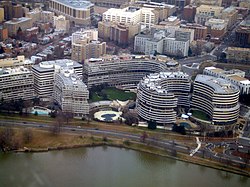
The Watergate scandal was a major political scandal in the United States involving the administration of President Richard Nixon from 1972 to 1974 that led to Nixon's resignation. The scandal stemmed from the Nixon administration's persistent attempts to cover up its involvement in the June 17, 1972 burglary of the Democratic National Committee headquarters at the Washington, D.C., Watergate Office Building.
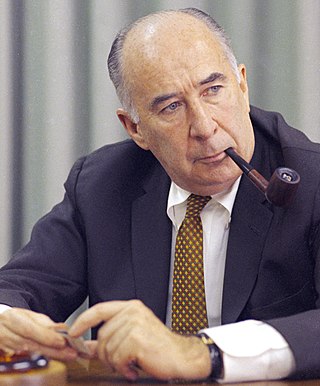
John Newton Mitchell was the 67th Attorney General of the United States under President Richard Nixon and chairman of Nixon's 1968 and 1972 presidential campaigns. Prior to that, he had been a municipal bond lawyer and one of Nixon's closest personal friends. He was tried and convicted as a result of his involvement in the Watergate scandal.

All the President's Men is a 1974 non-fiction book by Carl Bernstein and Bob Woodward, two of the journalists who investigated the June 1972 break-in at the Watergate Office Building and the resultant political scandal for The Washington Post. The book chronicles the investigative reporting of Woodward and Bernstein from Woodward's initial report on the Watergate break-in through the resignations of Nixon Administration officials H. R. Haldeman and John Ehrlichman in April 1973, and the revelation of the Oval Office Watergate tapes by Alexander Butterfield three months later. It relates the events behind the major stories the duo wrote for the Post, naming some sources who had previously refused to be identified for their initial articles, notably Hugh Sloan. It also gives detailed accounts of Woodward's secret meetings with his source Deep Throat, whose identity was kept hidden for over 30 years. Gene Roberts, the former executive editor of The Philadelphia Inquirer and former managing editor of The New York Times, has called the work of Woodward and Bernstein "maybe the single greatest reporting effort of all time."

Harry Robbins "Bob" Haldeman was an American political aide and businessman, best known for his service as White House Chief of Staff to President Richard Nixon and his consequent involvement in the Watergate scandal.
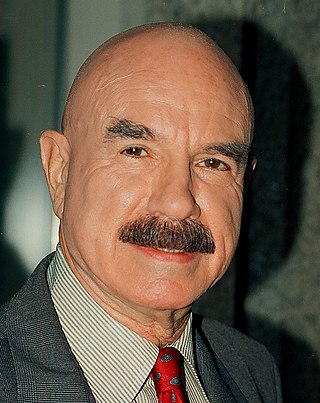
George Gordon Battle Liddy was an American lawyer, FBI agent, talk show host, actor, and convicted felon in the Watergate scandal as the chief operative in the White House Plumbers unit during the Nixon administration. Liddy was convicted of conspiracy, burglary, and illegal wiretapping for his role in the scandal.

The Committee for the Re-election of the President, abbreviated CRP, but often mocked by the acronym CREEP, was, officially, a fundraising organization of United States President Richard Nixon's 1972 re-election campaign during the Watergate scandal. In addition to fundraising, the organization also engaged in political sabotage against Nixon's opponents, the various Democratic politicians running in the election.

Jeb Stuart Magruder was an American businessman and high-level political operative in the Republican Party who served time in prison for his role in the Watergate scandal.

John Daniel Ehrlichman was an American political aide who served as the White House Counsel and Assistant to the President for Domestic Affairs under President Richard Nixon. Ehrlichman was an important influence on Nixon's domestic policy, coaching him on issues and enlisting his support for environmental initiatives.

John Wesley Dean III is an American former attorney who served as White House Counsel for U.S. President Richard Nixon from July 1970 until April 1973. Dean is known for his role in the cover-up of the Watergate scandal and his subsequent testimony to Congress as a witness. His guilty plea to a single felony in exchange for becoming a key witness for the prosecution ultimately resulted in a reduced sentence, which he served at Fort Holabird outside Baltimore, Maryland. After his plea, he was disbarred.

The White House Plumbers, sometimes simply called the Plumbers, the Room 16 Project, or more officially, the White House Special Investigations Unit, was a covert White House Special Investigations Unit, established within a week of the publication of the Pentagon Papers in June 1971, during the presidency of Richard Nixon. Its task was to stop and/or respond to the leaking of classified information, such as the Pentagon Papers, to the news media. The work of the unit "tapered off" after the bungled "Ellsberg break-in" but some of its former operatives branched into illegal activities while still employed at the White House together with managers of the Committee to Re-elect the President, including the Watergate break-in and the ensuing Watergate scandal. The group has been described as Nixon's "fixers".
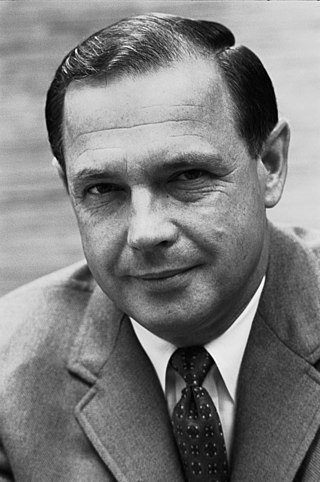
Alexander Porter Butterfield is a retired United States Air Force officer, public servant, and businessman. He served as the deputy assistant to President Richard Nixon from 1969 to 1973. He revealed the White House taping system's existence on July 13, 1973, during the Watergate investigation but had no other involvement in the scandal. From 1973 to 1975, he served as administrator of the Federal Aviation Administration.
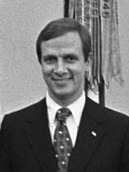
Gordon Creighton Strachan is an American attorney and political staffer who served as an aide to H.R. Haldeman, the chief of staff for President Richard Nixon and a figure in the Watergate scandal.
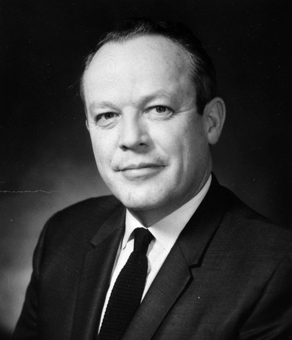
Richard Gordon Kleindienst was an American lawyer, politician, and U.S. Attorney General during the early stages of Watergate political scandal.

The Watergate Seven has come to refer to two different groups of people, both of them in the context of the Watergate scandal. Firstly, it can refer to the five men caught on June 17, 1972, burglarizing the Democratic National Committee's headquarters in the Watergate complex, along with their two handlers, E. Howard Hunt and G. Gordon Liddy, who were Nixon campaign aides. All seven were tried before Judge John Sirica in January 1973.

Robert Charles Mardian was a United States Republican party official who served in the administration of Richard Nixon, and was embroiled in the Watergate scandal as one of the Watergate Seven who were indicted by a grand jury for campaign violations. His conviction for conspiracy was overturned because of procedural unfairness and he was not subsequently retried.

The Watergate scandal refers to the burglary and illegal wiretapping of the headquarters of the Democratic National Committee, in the Watergate complex, by members of President Richard Nixon's re-election campaign and the subsequent cover-up of the break-in resulting in Nixon's resignation on August 9, 1974, as well as other abuses of power by the Nixon White House that were discovered during the course of the scandal.
Blind Ambition is a four-part American miniseries that aired on CBS from May 20, 1979 to May 23, 1979 focusing on the Watergate coverup and based on the memoirs of former White House counsel John Dean and his wife Maureen.

In the context of the Watergate scandal, Operation Gemstone was a proposed series of clandestine or illegal acts, first outlined by G. Gordon Liddy in two separate meetings with three other individuals: then-Attorney General of the United States, John N. Mitchell, then-White House Counsel John Dean, and Jeb Magruder, an ally and former aide to H.R. Haldeman, as well as the temporary head of the Committee to Re-elect the President, pending Mitchell's resignation as Attorney General.
Watergate is a documentary series co-produced by the BBC and Discovery, broadcast in 1994. It was based on the book Watergate: The Corruption and Fall of Richard Nixon, by Fred Emery. The series was directed by Mick Gold and produced by Paul Mitchell and Norma Percy.
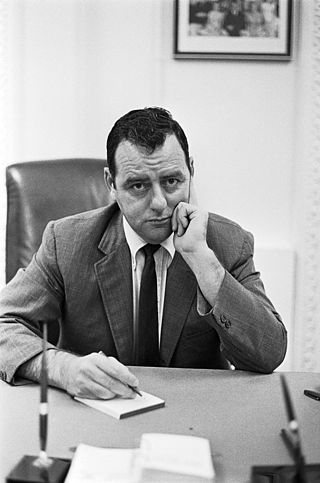
John J. Caulfield was an American security operative and law enforcement officer. He was a member of the Richard Nixon administration around the time of the Watergate Scandal, though he avoided prosecution.

